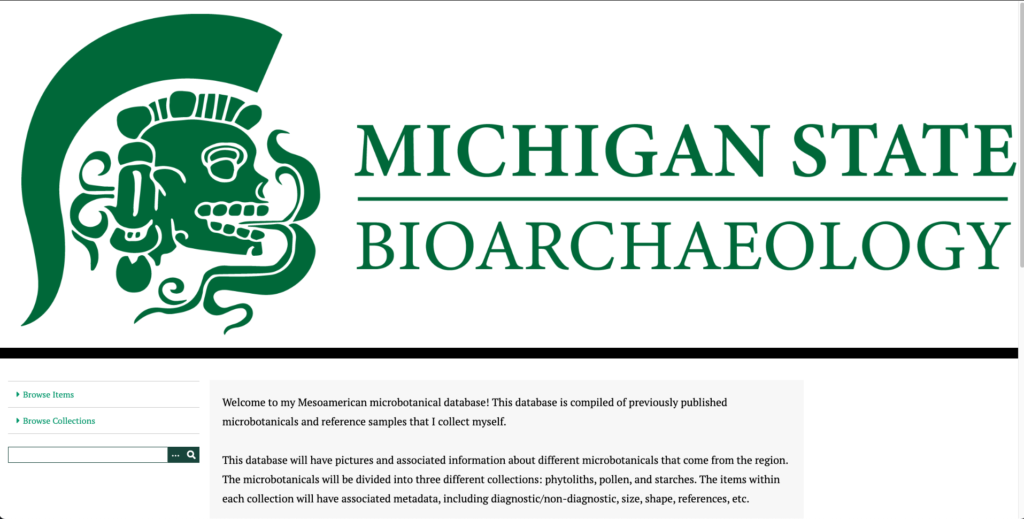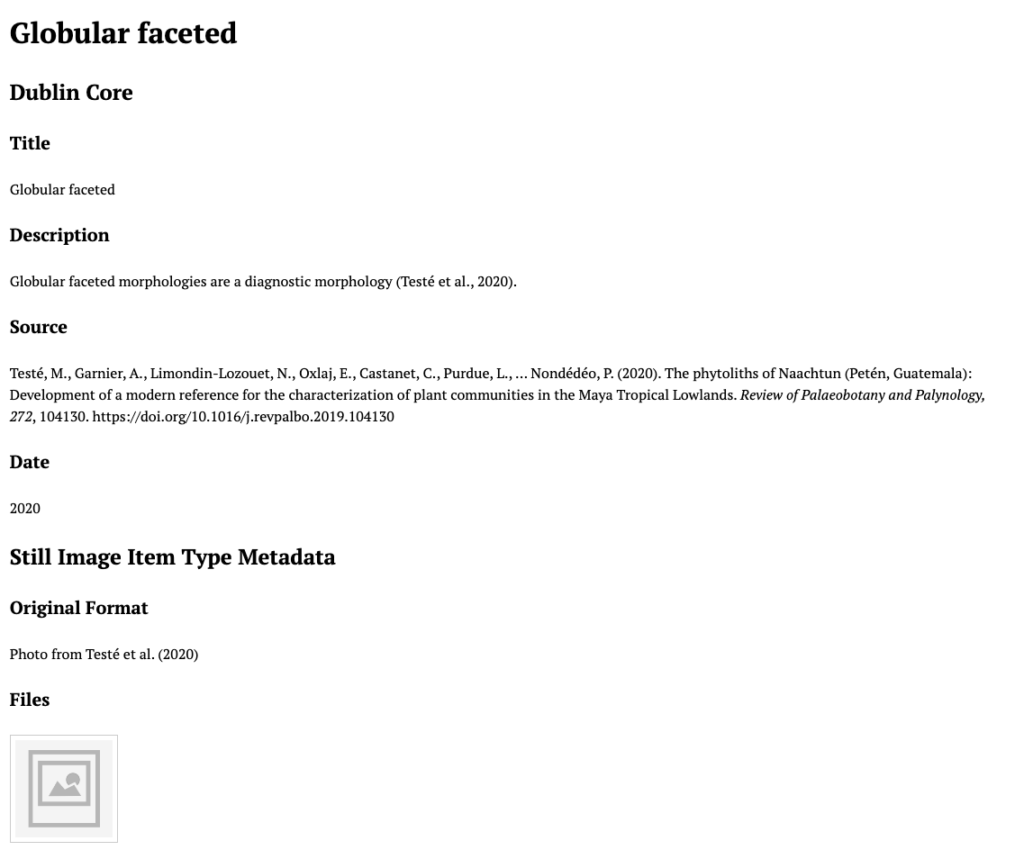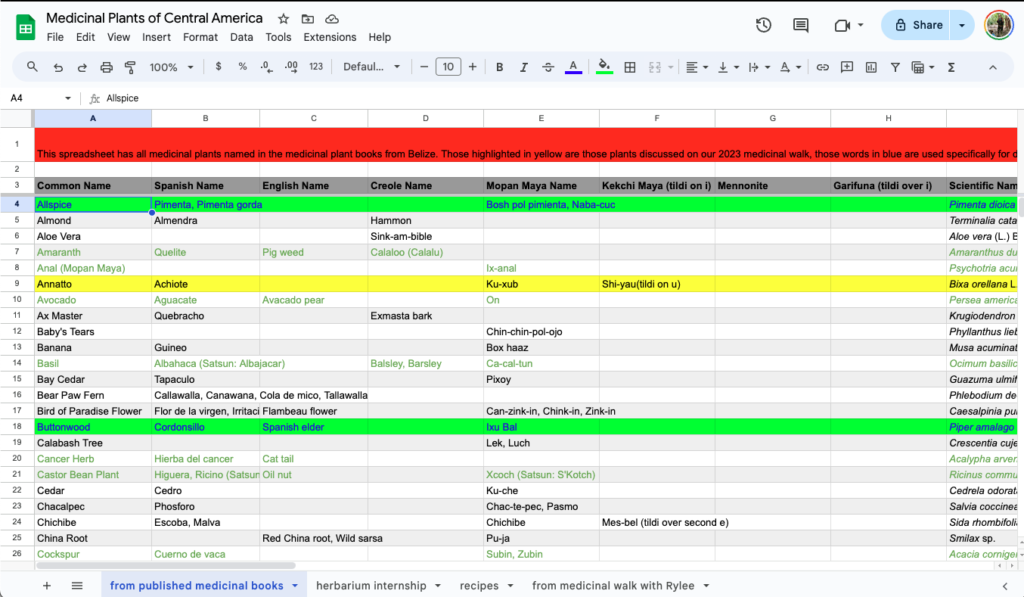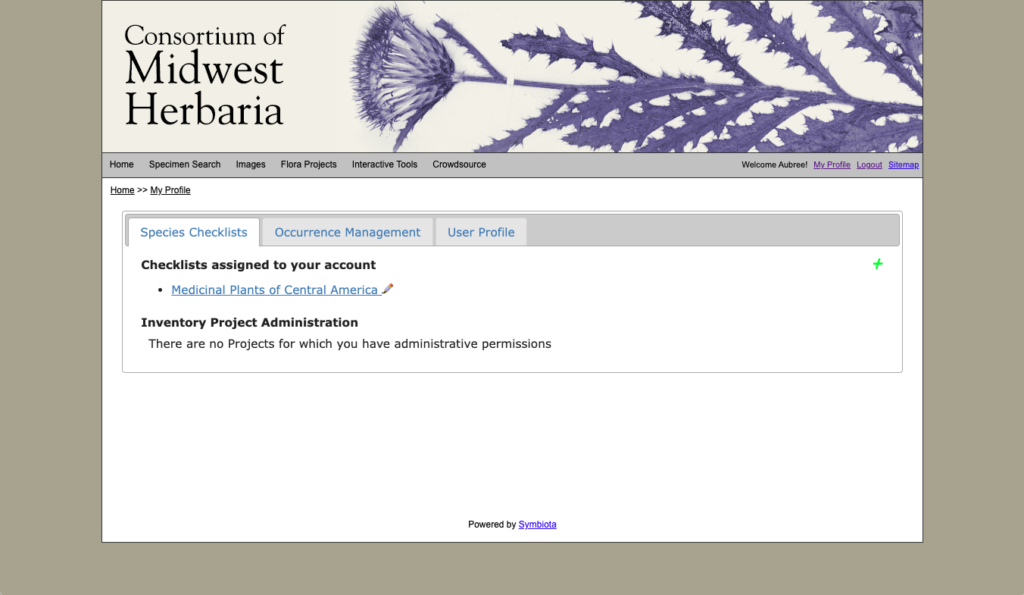Seed Grant Summer 2024 Report
Aubree Marshall
Project Background
Food plays a complex role in our daily lives. In addition to providing us with the nutrition we need to nourish our bodies, food access and choice reflect many different cultural practices and ideologies, which in turn can affect health for better or for worse (White, 1999). Thus, many archaeological studies focus on the intersection of diet and social organization to determine how and why this relationship varies within and between populations, as well as to identify and interpret dietary shifts resulting from technological, environmental, and social changes.
Archaeologists have attempted to reconstruct the diet of ancient individuals in a multitude of ways, both indirectly and directly. Examples of indirect methods include analyses of faunal and floral remains recovered from archaeological contexts and analyses of residues on pottery and tools. These methods allow scientists to accurately identify which species were consumed by ancient populations but do not distinguish individual diets, making the sources of dietary variation difficult or impossible to determine (White, 1999). Direct analyses of skeletal remains can provide evidence of dietary variation at the individual level but do not identify the specific foods eaten. For instance, stable isotopic analyses of teeth and bones allow us to determine an individual’s place in the food chain, identifying the general source of their dietary proteins and carbohydrates (Sponheimer and Cerling, 2014). Paleopathological analysis provides an additional direct line of skeletal evidence by identifying lesions associated with metabolic disruptions or consumption of cariogenic foods (Ortner, 2012). These methods allow researchers to compare individual diets and identify variations present. However, neither can identify the specific components of diets.
One underutilized resource that can aid researchers in reconstructing ancient diets is dental calculus. Dental calculus is mineralized plaque on the surface of the tooth (Hardy et al., 2009; Tromp et al., 2017) that is formed during life as a result of interactions between saliva and gingival crevice fluid and colonies of microorganisms living in the mouth (Lieverse, 1999). Thus, because calculus cannot be formed after death, the microparticles inside of the matrix are those that would pass through the mouth in life (Lieverse, 1999). These mineralized deposits survive well in the archaeological record and the microfossils trapped within dental calculus uniquely allow the identification of specific foods that individuals consumed.
The use of DC in dietary studies complements previous dietary studies, including stable isotopic research, by providing a more nuanced view of an individual’s access to foods without the need to destroy human bones or teeth. Analyses of DC can provide information on not only diet, but also on food preparation (García-Granero, 2020), disease (Weyrich et al., 2017), occupation (Chan et al., 2022), and long-distance trade (Blatt et al., 2011).
One notable finding comes from Hardy and colleagues (2013), who found evidence of medicinal plant use in Neanderthal DC, allowing the researchers to learn more about the potential medicinal knowledge of Neanderthals and ailments that would not have affected their skeleton. The finding of medicinal plants in DC opens a new door for understanding accessibility to resources, types of non-skeletal affecting ailments the individual may have had, and works towards the reconstruction of traditional knowledge.
One drawback of this work in Mesoamerica comes from a lack of published and easily searchable microbotanical medicinal plant databases (one notable exception is the Phytolith Project, University of Missouri). When travel is impossible, or access to labs to conduct specialized research is unavailable, databases provide an accessible and affordable way for students and professionals alike to start and continue research. Additionally, multiple projects can be conducted with the same dataset, allowing us to better understand the sample in question.
While medicinal plant use has surely changed over the centuries, understanding what these plants are used for today is an integral first step for asking health and care-related questions in antiquity. As a part of my dissertation, I will be creating a microbotanical medicinal plant database by collecting microbotanical images from several previously published sources and adding my own reference collections.
Project Description and Outcomes
I applied for the DH Seed grant so that I could begin working on the outline and structure of this online database. Once I created a wireframe, and because of my previous experience working with GitHub, my original plan was to build this database using GitHub pages. However, after discussing this with several people, I realized that GitHub was not the best place for hosting a database. From here, I made a lateral move to MSU Domains, where I started a WordPress site (images below).

At this point, I was hopeful that I had found my database. I included about 11 new phytolith shapes, but with each new item I added, I realized that I didn’t quite love how each category was turning out:

So, I went back to the drawing board. I realized that, instead of basing the items by shape, it was best to do it by plant species. Then, after talking to a few key people about my project and the long-term vision for it, it became clear that one of the best sustainability options was to host my project through H-Net. This is how I decided to apply to H-Spaces, an initiative that aims to expand access to content management and plug-ins for different projects and data visualizations. I’m excited to be a part of the first cohort, and to get additional advice as to what I should consider when creating this project and how to improve it. With that said, I am once again at square one with the creation of the database itself. But in the meantime, I stayed busy collecting much of the data that I will need for my database.
The first part of my data collection included going through previously published books (especially Arvigo, 1993) and articles that discussed medicinal plants in the region. I was able to complete two separate books, review several articles, and review notes from a previous medicinal walk that I took in the summer of 2023 with Mr. Antonio at Elijio Panti National Park in San Antonio, Belize. In addition, I was able to talk a little bit with other Belizean individuals during the summer of 2024 and learned more about some of the local vegetation. I collected all of this information in an Excel spreadsheet, which included the plant name (scientific, English, Spanish, Creole, Mopan Maya, Kekchi Maya, Mennonite, and Garifuna), plant family, traditional use, research results, and how they relate to dental health if they did. The spreadsheet can be seen below.

After this was completed, I was able to work in the MSU Herbarium as a part of the Natural Science Collections Summer Professional Internship to digitize their Central American and South American medicinal plant collections. In this process, I learned a new skillset, was able to see what plants were already available at the herbarium, and what plants still needed to be collected. I am still working on digitizing the plants, but once completed, I will apply for a permit to collect the compiled list of plants not available at MSU and bring them here.
In addition to digitizing the plants available at the MSU Herbarium, I have also begun a checklist through the Consortium of Midwest Herbaria with the previously published information that I have collected. The checklist is not visible to the public yet but will be once more of the species are digitized.

Why was this such an important part of my project? Not only will I know exactly what plants will need to be collected in the field, but knowing what plants are already available in Michigan is incredibly important because not all of the plants we’re digitizing have had their microbotanicals analyzed. I will be working with the herbarium to collect small samples to dry ash in an attempt to identify any microbotanicals of medicinal plants that have not already been published.
Future Directions
When I submitted my DH Seed Grant application, I was hoping to collect data, build the framework of my website, include at least thirty samples into the website, and begin creating K-12 lesson plans for educators. However, almost nothing worked to plan with this project.
While I do not have all of the deliverables that I hoped for, I do have an extensive amount of plant information that can be directly uploaded to the database once it is created. In the immediate future, I am excited to work with H-Net Spaces to further develop my ideas for the project and to get it off the ground. Once off of the ground, I will include lesson plans that will be available for educators to use in their schools if they find that they fit into their curriculum, as well as interview data once collected. Interviews are planned for the summer of 2025.
As I mentioned before, the long-term goal of this research is to create an open-access digital database and a handbook for people to reference. Information for each plant will include the plant image, associated microbotanical images, medicinal uses, recipes where available, and interview information. This resource will be helpful to both researchers and educators interested in medicinal plants in Mesoamerica and in understanding the past lived experiences of the individuals utilizing those plants. My dissertation article associated with this project will describe the process leading up to the creation of the database along with the medicinal plant information gathered based on the interviews. This paper will provide a framework for community-engaged work in the region as well as the methodology regarding prepping plants to create a microbotanical reference sample.
References
Blatt, S.H. (2007). Biocultural Implications from Scanning Electron Microscopy of Prehistoric Human Dental Calculus, Ohio. The Ohio State University.
Chan, A. M., Brady, J. E., and Scott Cummings, L. (2022). Blue fibers found in dental calculus from Maya sacrificial victims. International Journal of Osteoarchaeology, 32(6), 1310–1314.
García-Granero, J. J. (2020). Starch taphonomy, equifinality and the importance of context: Some notes on the identification of food processing through starch grain analysis. Journal of Archaeological Science, 124, 105267.
Hardy, K., Blakeney, T., Copeland, L., Kirkham, J., Wrangham, R., and Collins, M. (2009). Starch granules, dental calculus and new perspectives on ancient diet. Journal of Archaeological Science, 36(2), 248–255.
Hardy, K., Buckley, S., and Huffman, M. (2013). Neanderthal self-medication in context. Antiquity, 87(337), 873–878.
Lieverse, A. R. (1999). Diet and the aetiology of dental calculus. Int. J. Osteoarchaeol., 9(4), 219–232.
Ortner, D. J. (2012). Differential Diagnosis and Issues in Disease Classification. In A. L. Grauer (Ed.), A Companion to Paleopathology (pp. 250–267). Oxford, UK: Wiley-Blackwell.
Home | Phytolith Project, University of Missouri. Accessed March 27, 2024, https://phytolith.missouri.edu/.
Sponheimer, M., and Cerling, T. E. (2014). Investigating Ancient Diets Using Stable Isotopes in Bioapatites. In Treatise on Geochemistry (pp. 341–355). Elsevier.
Tromp, M., Buckley, H., Geber, J., and Matisoo-Smith, E. (2017). EDTA decalcification of dental calculus as an alternate means of microparticle extraction from archaeological samples. Journal of Archaeological Science: Reports, 14, 461–466.
Weyrich, L. S., Duchene, S., Soubrier, J., Arriola, L., Llamas, B., Breen, J., … Cooper, A. (2017). Neandertal behaviour, diet, and disease inferred using ancient DNA preserved in dental calculus. Nature, 544(7650):357-361.
White, C. (Ed.). (1999). Reconstructing Ancient Maya Diet. Salt Lake City: The University of Utah Press.